Dive into Adventure with the Latest Waterproof Film Cameras
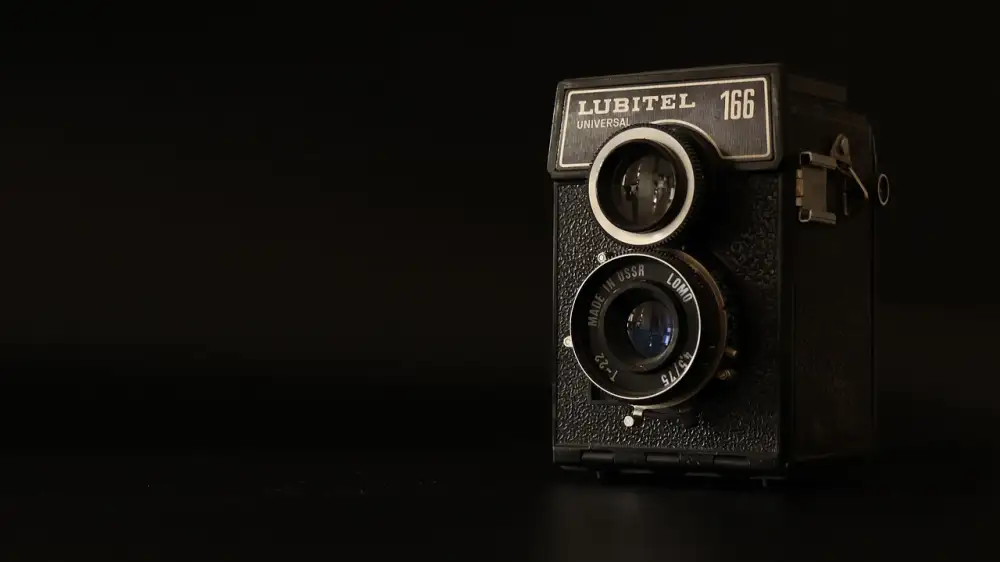
- Film Sensitivity and ISO
- Shutter Speed Underwater
- Aperture and Depth of Field
- Focusing Challenges Underwater
- Autofocus Systems in Waterproof Film Cameras
- Light Metering Underwater
- Waterproof Film Camera Construction
- Waterproof Seals and O-rings
- Pressure Resistance and Depth Ratings
- Film Advance Mechanisms
- Underwater Flash Photography
- External Flash Options
- Film Choices for Underwater Photography
- Color Correction Filters
- Maintaining a Waterproof Film Camera
Film Sensitivity and ISO
Film sensitivity, often represented by its ISO number, is a key factor to understand when using a waterproof film camera. It indicates how sensitive the film is to light. A lower ISO number, like ISO 100, signifies lower sensitivity, making it suitable for bright sunny days where there's plenty of natural light. On the other hand, a higher ISO, such as ISO 400 or 800, denotes higher sensitivity, allowing you to shoot in dimmer conditions like cloudy days or indoors. Some films even go up to ISO 1600 or 3200, offering versatility for low-light situations.
Choosing the right film ISO for your waterproof camera depends largely on your shooting environment. Since these cameras are often used for outdoor adventures, having a versatile ISO is beneficial. A good starting point is ISO 400, which provides a balance for various lighting conditions. If you're primarily shooting underwater, keep in mind that light decreases with depth. Therefore, a higher ISO film or using the camera's flash might be necessary. Remember, using a higher ISO can sometimes result in grainier images, so it's always a trade-off between sensitivity and grain. Experimenting with different ISO films will help you understand the results and find what works best for your waterproof photography needs.
Shutter Speed Underwater
Shutter speed plays a crucial role in underwater photography with your trusty film camera. Since light travels slower underwater and is absorbed by water, you need to be extra mindful of your shutter speed settings.
A good rule of thumb is to use a shutter speed of at least 1/125th of a second to avoid blurry images due to camera shake or moving subjects. If you're shooting fast-moving fish or using a wider aperture for shallow depth of field, you'll need to bump up your shutter speed even more. Consider 1/250th or even faster to freeze the action.
Don't be afraid to experiment with slower shutter speeds to create artistic motion blur effects, especially with slow-moving subjects like coral or seaweed. Keep in mind that using a slower shutter speed increases the risk of blur, so use a tripod or find a stable surface to steady your camera.
Remember that available light decreases significantly as you descend deeper. If you're diving deep or shooting in low-light conditions, you'll need to use a faster film speed or a wider aperture to compensate for the lower light levels and maintain a reasonable shutter speed.
Aperture and Depth of Field
Aperture, the adjustable opening in your waterproof film camera's lens, plays a crucial role in controlling both the amount of light hitting the film and the depth of field in your images. A wider aperture, denoted by a smaller f-number (e.g., f/2.8), allows more light to enter, which is beneficial in low-light conditions like underwater scenes or overcast days. Conversely, a narrower aperture, represented by a larger f-number (e.g., f/16), restricts light intake, ideal for bright sunny days at the beach.
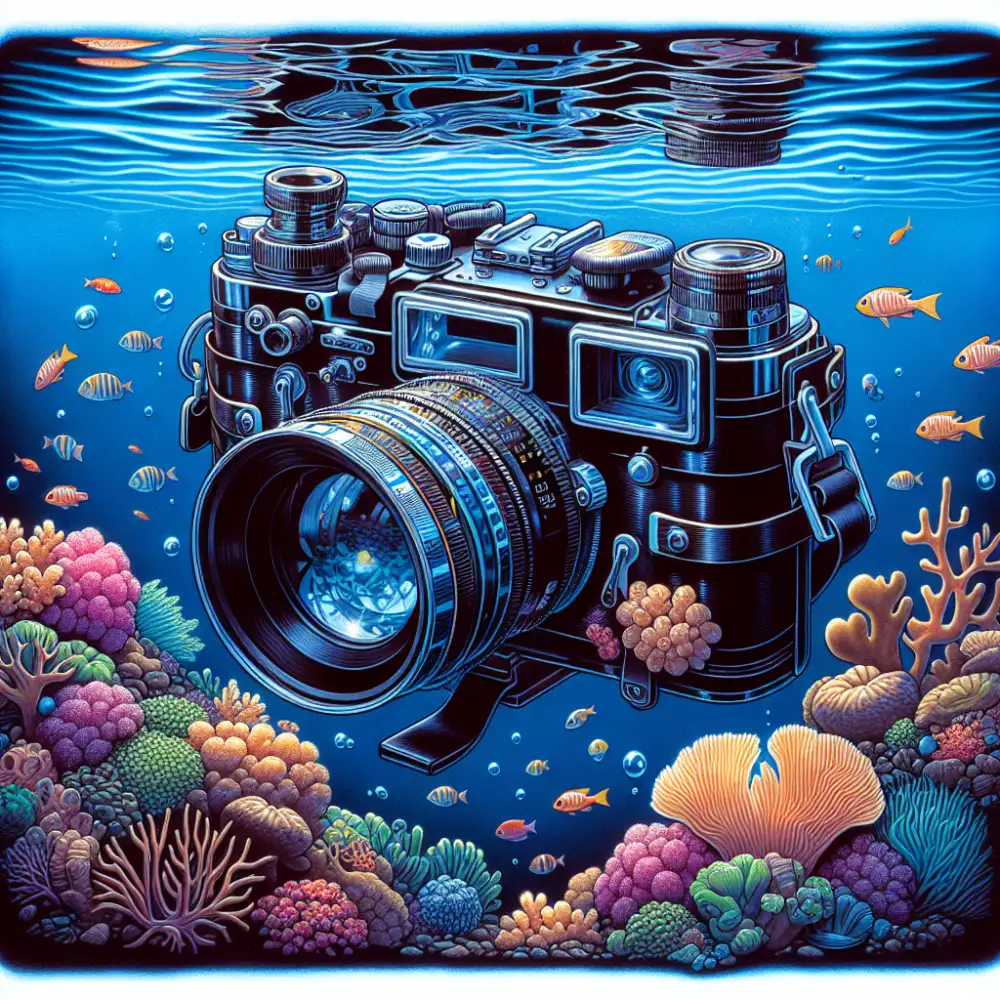
Beyond light control, aperture significantly impacts depth of field, the zone of acceptable sharpness in your photos. A wider aperture like f/2.8 creates a shallow depth of field, blurring the background and emphasizing your subject – perfect for portraits or isolating details. On the other hand, a narrower aperture like f/16 extends the depth of field, rendering both the foreground and background sharper. This is particularly useful for landscapes or group shots where you want everything in focus. Experimenting with different aperture settings on your waterproof film camera will allow you to creatively control exposure and depth of field, adding another layer of artistry to your underwater and outdoor adventures.
Focusing Challenges Underwater
Focusing underwater presents unique challenges for film cameras. Water density and refraction can make it difficult to achieve sharp images. Many waterproof film cameras utilize fixed-focus lenses, sacrificing precise control for simplicity and durability. These cameras are pre-set to a specific focus distance, typically around 6 feet, ensuring objects within that range appear reasonably sharp.
While convenient, fixed-focus limits creative control, especially for close-up shots. Some waterproof film cameras offer zone focusing, a system with marked distances on the lens barrel. By aligning the distance marking with an estimate of the subject's distance, you can improve sharpness. However, zone focusing requires practice and a good eye for distance underwater.
Remember that water absorbs light, affecting exposure underwater. You might need to use a faster film speed or adjust the camera's exposure compensation to compensate for light loss. Experimentation is key to mastering underwater photography with a film camera.
Autofocus Systems in Waterproof Film Cameras
Waterproof film cameras, by their nature, are rugged and designed for simplicity. Most waterproof film cameras utilize a fixed-focus lens system. This means that the lens is pre-set to provide a reasonably sharp image within a specific distance range, usually from a few feet to infinity. This approach eliminates the need for complex autofocus mechanisms, which can be susceptible to damage or malfunction in wet environments.
Fixed-focus systems are well-suited for point-and-shoot photography, where the subject is typically at a moderate distance. The depth of field, which is the range of distances in focus, is relatively wide in these cameras, ensuring that most subjects within the designated range appear sharp.
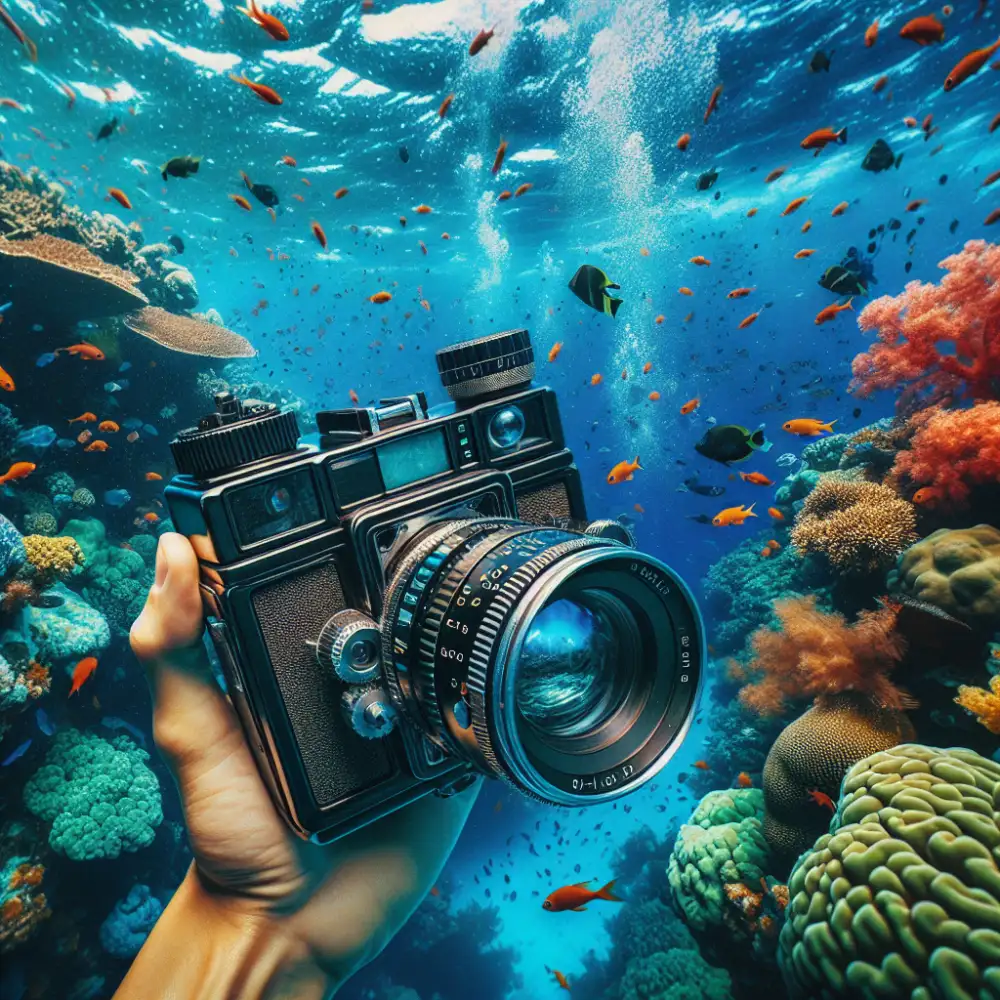
While autofocus is not a common feature in waterproof film cameras, some models might offer limited autofocus capabilities. These systems are usually basic and rely on a small number of focus zones. They might use contrast detection autofocus, which analyzes the contrast in the image to determine focus. However, these autofocus systems are not as fast or sophisticated as those found in modern digital cameras.
Ultimately, the choice between a fixed-focus and a limited autofocus waterproof film camera depends on the user's needs and preferences. Fixed-focus cameras offer simplicity, durability, and often a more compact design. On the other hand, cameras with limited autofocus provide some degree of control over focusing, which can be beneficial in certain situations.
Light Metering Underwater
Light behaves differently underwater, and that's something your trusty waterproof film camera might struggle with. You see, water absorbs light, and different colors of light get absorbed at different depths. This means your photos can turn out bluer and darker than you'd expect, especially as you go deeper.
Your camera's built-in light meter is designed for dry land, not the underwater world. It might get confused by the way light acts underwater, leading to overexposed or underexposed shots. So, how do you make sure your underwater photos are perfectly lit?
First off, get close to your subject. The closer you are, the less water the light has to travel through, resulting in brighter and more colorful photos. External underwater flashes are your secret weapon for well-lit underwater shots. They provide that extra burst of light needed to combat the light absorption of water.
Experiment with your camera settings. Many waterproof film cameras have specific underwater settings that adjust for the unique lighting conditions. If yours doesn't, try using a slightly faster film speed or adjusting your exposure manually.
Underwater photography with a film camera is all about trial and error. Don't be afraid to experiment and see what works best for you and your camera.
Waterproof Film Camera Construction
Waterproof film cameras, often dubbed "tough cameras," are marvels of engineering designed to withstand the elements while capturing memories. Unlike their digital counterparts, these analog adventurers rely on ingenious mechanical and chemical processes to produce images. Let's dive into the intricate construction that makes these cameras impervious to water.
At the heart of a waterproof film camera lies a robust and airtight outer shell. Typically crafted from high-impact polycarbonate or metal alloys, this shell forms the first line of defense against water intrusion. O-rings, flexible gaskets made from silicone or rubber, are strategically placed at all potential entry points – lens barrels, button shafts, film compartments, and battery doors. These O-rings create a watertight seal when the camera is closed, preventing even the tiniest droplet from seeping in.
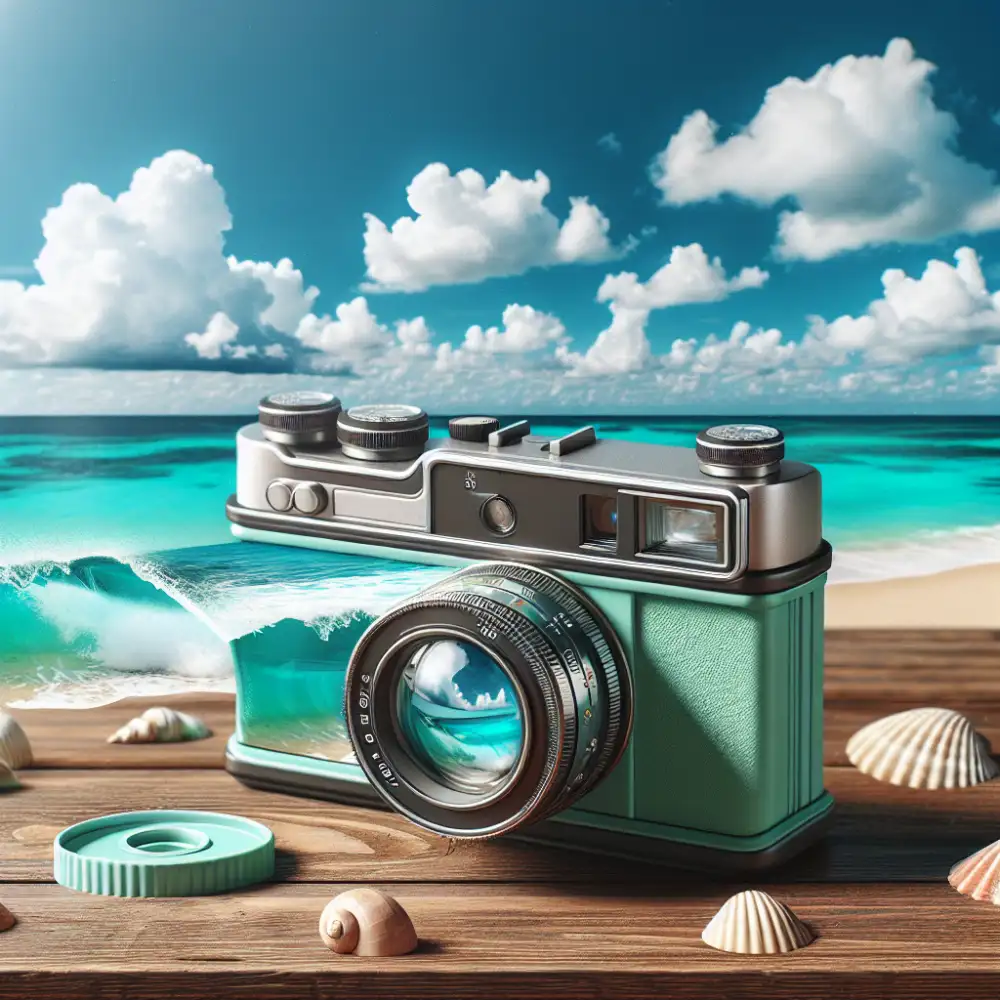

The lens of a waterproof film camera is equally crucial for underwater photography. Often constructed with multiple glass elements, the lens is housed within a sealed barrel that extends from the camera body. This barrel allows for focusing and zooming without compromising the waterproof integrity. Some models even feature a protective glass or acrylic cover over the lens to prevent scratches and further enhance waterproofing.
Film loading and advancement mechanisms are also carefully designed to maintain water resistance. Most waterproof film cameras employ a drop-in film loading system, where the entire film canister is inserted into a sealed compartment. This eliminates the need for intricate film transport mechanisms that could be vulnerable to water damage.
To ensure the camera remains operational underwater, buttons and controls are often oversized and covered with rubberized seals. These seals prevent water from entering while still allowing for easy operation, even with gloved hands. Similarly, battery compartments are equipped with robust locking mechanisms and O-rings to safeguard the camera's power source.
The intricate construction of waterproof film cameras is a testament to engineering ingenuity. By combining durable materials, precision manufacturing, and clever design, these cameras allow photographers to capture stunning images in environments that would cripple ordinary cameras. Whether you're an avid diver, a thrill-seeker, or simply enjoy peace of mind, a waterproof film camera offers a unique and reliable way to document your adventures.
Waterproof Seals and O-rings
Waterproof film cameras rely heavily on robust sealing mechanisms to prevent water intrusion and protect the delicate film and internal components. These cameras utilize a combination of waterproof seals and O-rings to create a watertight barrier.
Waterproof seals are typically made of durable, water-resistant materials such as rubber or silicone. These seals are strategically placed at all potential entry points for water, including the camera's housing seams, button interfaces, and lens attachments. The seals are designed to compress tightly against the camera body, forming a secure barrier that prevents water from seeping through.
O-rings are another crucial component of waterproof film cameras. These small, ring-shaped seals are typically made of elastomeric materials like nitrile rubber or silicone. O-rings are placed in grooves or channels within the camera's housing. When the camera is closed or sealed, the O-rings compress, creating a watertight seal. The elasticity of the O-ring material allows it to conform to the mating surfaces, ensuring a tight and reliable seal even under pressure.
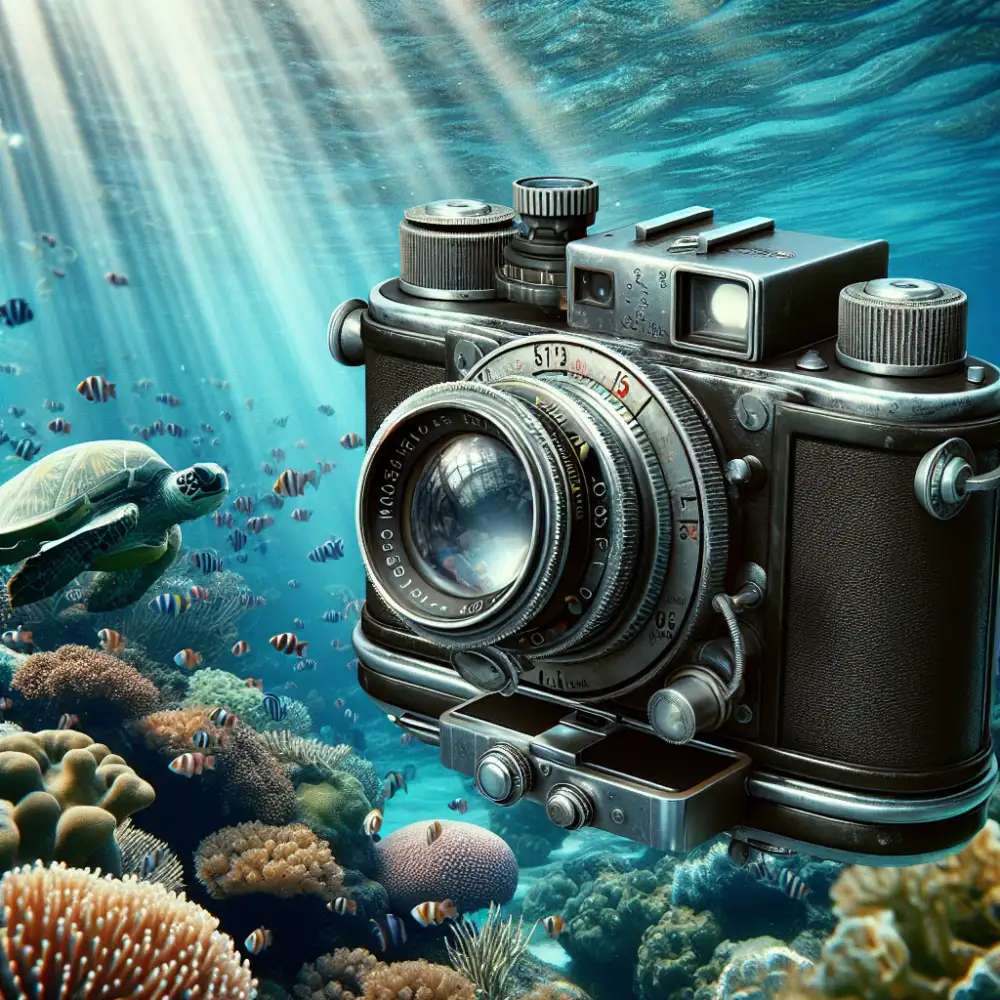
The effectiveness of waterproof seals and O-rings depends on their quality, proper installation, and regular maintenance. Over time, seals can degrade due to exposure to water, chemicals, and temperature fluctuations. It's essential to inspect seals regularly for any signs of wear and tear, such as cracks, tears, or deformation. Damaged seals should be replaced promptly to maintain the camera's waterproof integrity.
Pressure Resistance and Depth Ratings
Waterproof film cameras come with different pressure resistance levels, indicated by their depth rating. This rating, usually expressed in meters (m) or feet (ft), tells you the maximum depth the camera can be submerged underwater without damage. A higher depth rating means the camera can withstand greater water pressure.
It's crucial to understand that depth ratings are not absolute guarantees. They are determined through controlled laboratory tests using freshwater and might not account for factors like rapid temperature changes, saltwater exposure, or strong currents.
When choosing a waterproof film camera, consider your intended use. For occasional snorkeling or swimming pool photography, a camera with a depth rating of 5m (16ft) to 10m (33ft) might suffice. However, for serious underwater photography or diving at greater depths, you'll need a camera with a higher depth rating, such as 20m (66ft) or more.
Always check the manufacturer's guidelines for specific depth limits and precautions. Remember that exceeding the depth rating can lead to water damage and ruin your camera and precious film.
Film Advance Mechanisms
Waterproof film cameras require special attention to film advance mechanisms to maintain their watertight seal. Unlike traditional cameras where the film advance knob or lever directly engages the film spool, waterproof models often employ more complex systems.
One common approach is the use of magnetic coupling. In this design, the external advance control is magnetically linked to an internal mechanism that handles the film transport. The magnetic connection eliminates the need for a direct physical connection through the camera body, preserving the waterproof seal.
Another method involves a system of gears and shafts to transmit the advance motion from the external control to the film spool. These components are carefully sealed and lubricated to prevent water ingress. This approach ensures reliable film advance even in challenging underwater environments.
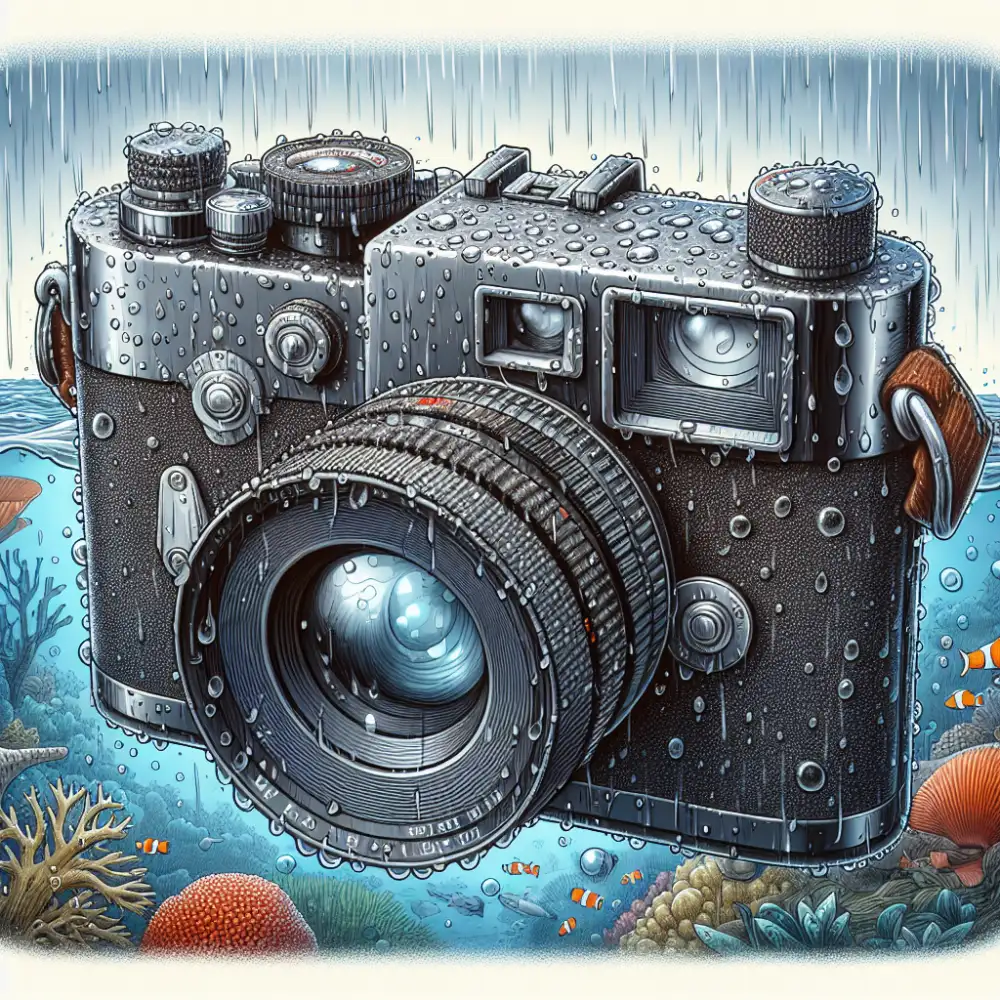
Some waterproof cameras utilize a motorized film advance system. This method offers the convenience of automatic film winding after each shot. The motor and its associated electronics are housed in a sealed compartment to maintain water resistance.
Regardless of the specific mechanism employed, waterproof film cameras undergo rigorous testing to ensure their ability to withstand water pressure and prevent leaks. The film advance system, as a critical component, receives particular scrutiny during these tests.
Underwater Flash Photography
Underwater photography presents unique challenges, and using a waterproof film camera adds another layer of complexity. Unlike digital cameras where you can instantly review and adjust settings, film cameras require careful planning and a good understanding of both your camera and the underwater environment.
Before diving in, make sure your camera's waterproof seals are in perfect condition. Old or damaged seals can lead to leaks, ruining your film and potentially damaging your camera. Always test your camera with a roll of unimportant film before using it for important shots.
Lighting is crucial underwater. As you descend, water absorbs light, particularly red wavelengths. This can result in images with a blue or green color cast. To combat this, consider using an external flash. Underwater flashes are designed to restore natural colors and illuminate your subject.
When using a flash, remember that water particles can scatter the light, creating backscatter and ruining your shot. To minimize this, position your flash away from the camera, either using a flash arm or by angling your camera slightly upwards.
Choosing the right film is also essential. Opt for a film with a high ISO rating, such as 400 or 800, to compensate for the lower light levels. Consider film specifically designed for underwater use, as these emulsions are formulated to enhance color saturation and clarity in underwater conditions.
Mastering underwater flash photography with a film camera takes practice and patience. However, the unique challenges are outweighed by the rewards. The tangible nature of film adds a certain magic to underwater photography, capturing moments in time with a timeless quality.
External Flash Options
Waterproof film cameras, especially older models, often have limited built-in flash capabilities. These built-in flashes might be too weak for low-light situations or could cause unwanted reflections or red-eye. Thankfully, many waterproof film cameras feature a hot-shoe mount. This allows you to expand your creative potential with an external flash.
An external flash unit can provide a burst of light that's much more powerful than your camera's built-in flash, perfect for illuminating subjects in dimly lit scenes. They also offer more control over the direction and intensity of light. You can often diffuse or bounce the flash for softer, more flattering results.
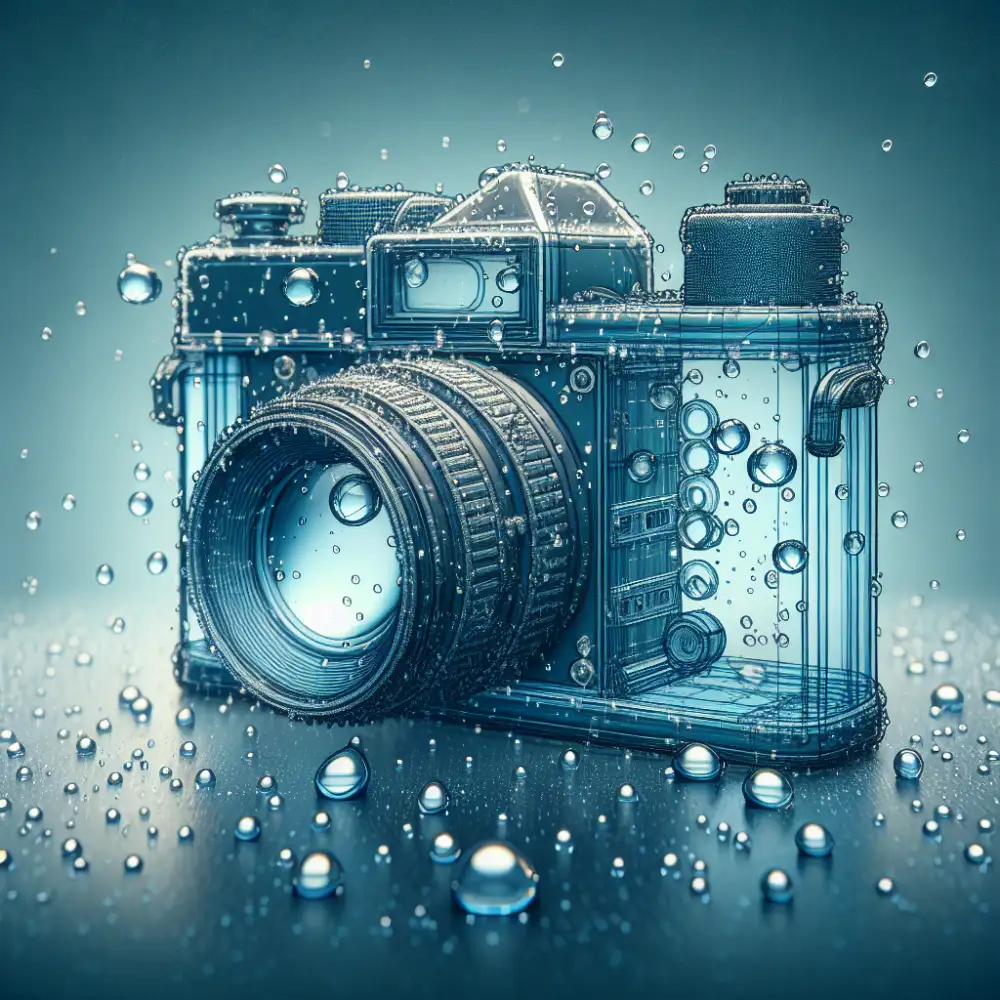
When choosing an external flash for your waterproof film camera, ensure it's compatible with your camera model. Look for features like TTL (Through The Lens) metering, which automatically adjusts the flash output for optimal exposure.
Remember, using an external flash will drain your camera's battery faster. Carry spare batteries to avoid missing out on those perfect shots. Experiment with different flash techniques and settings to discover the creative possibilities for your underwater photography.
Film Choices for Underwater Photography
When diving into the world of underwater photography with your trusty waterproof film camera, choosing the right film stock is crucial for capturing vibrant and sharp images. The type of film you select will significantly impact the final look of your photographs, influencing color saturation, contrast, and overall feel.
For vibrant and true-to-life colors, daylight-balanced color negative film is an excellent choice. Look for films with an ISO rating of 200 or 400 for optimal results in various underwater lighting conditions. These films are versatile and forgiving, making them suitable for both sunny and slightly overcast days.
If you're aiming for a more classic and nostalgic aesthetic, black and white film can create stunning underwater imagery. The absence of color allows for a greater emphasis on texture, contrast, and the play of light and shadow. Experiment with different ISO ratings, such as 400 or even higher, to achieve the desired grain and contrast in your photographs.
For those seeking a unique and artistic touch, consider experimenting with color negative films specifically designed for underwater photography. These films are often formulated to correct for the blue-green color cast that can occur underwater, resulting in more accurate and vibrant colors.
Remember to protect your film from extreme temperatures and humidity, both before and after shooting. Store your film in a cool, dry place, and develop it as soon as possible after your dive to ensure the best possible results.
Color Correction Filters
Color correction filters, also known as color compensating filters, are an essential tool for any film photographer looking to achieve accurate and vibrant colors in their underwater photography. Water acts as a filter, absorbing and scattering light, which can lead to a blue or green color cast in your images. Color correction filters help to counteract these effects by adding back the missing colors and balancing the overall color temperature.
| Feature | Camera Model A | Camera Model B | Camera Model C |
|---|---|---|---|
| Waterproof Depth | |||
| Film Format | 35mm | 35mm | 120 |
| Lens Focal Length | |||
| Shutter Speed Range | |||
| Exposure Control | Automatic | Manual | Automatic |
| Flash | Built-in | None | Built-in |
| Weight | |||
| Dimensions | |||
| Price |
There are two main types of color correction filters:
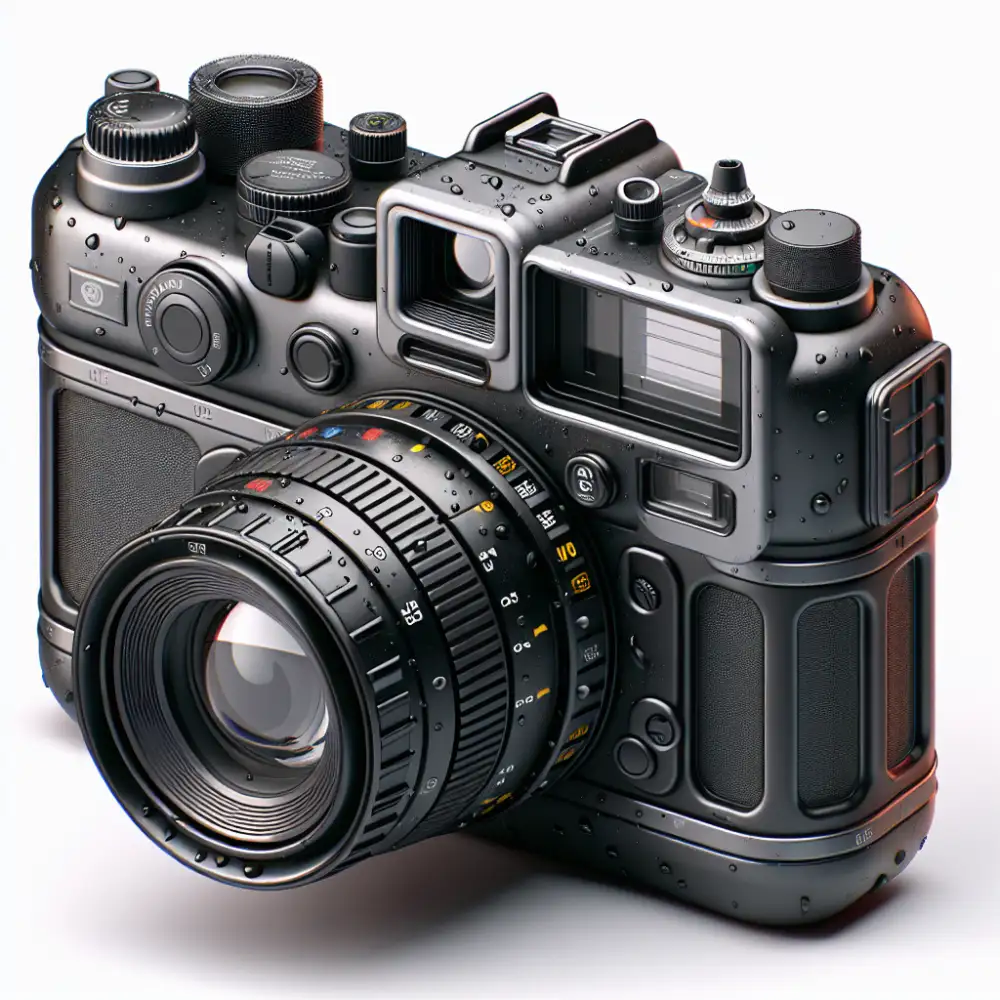
Color correction filters for daylight use: These filters are designed to be used in shallow water, typically within the first 15 feet (5 meters) of depth. They come in a variety of strengths, with the most common being CC30R and CC40R. These filters help to remove the excess blue and green hues that are prevalent in shallow water.
Color correction filters for deeper water: As you descend deeper, the color spectrum narrows, and reds are the first to be absorbed. For depths below 15 feet (5 meters), stronger color correction filters, such as CC20M or CC40M, are recommended. These filters add back the missing reds and magenta tones, resulting in more natural-looking images.
When choosing color correction filters for your waterproof film camera, consider the following factors:
Depth of your dives: The deeper you go, the stronger the filter you will need.
Water conditions: Turbid or murky water will require stronger filters than clear water.
Film stock: Different film stocks have varying sensitivities to color.
Experimenting with different filters and film stocks is key to finding the perfect combination for your underwater photography. With the right color correction filters, you can capture stunning and true-to-life colors beneath the surface.
Maintaining a Waterproof Film Camera
Waterproof film cameras are awesome for capturing adventures in any weather, but they need some special care to keep them working smoothly. After a dip in the ocean or a day out in the rain, give your camera a good rinse with fresh water. This will wash away any saltwater, sand, or dirt that could cause damage. Use a soft cloth or cotton swab to gently clean the camera body, paying extra attention to the seals around the battery compartment and film door. Make sure these areas are completely dry. Speaking of seals, these are crucial for keeping your camera watertight. Inspect them regularly for any signs of wear and tear, like cracks or dryness. If you spot any issues, it's best to get them replaced sooner rather than later.
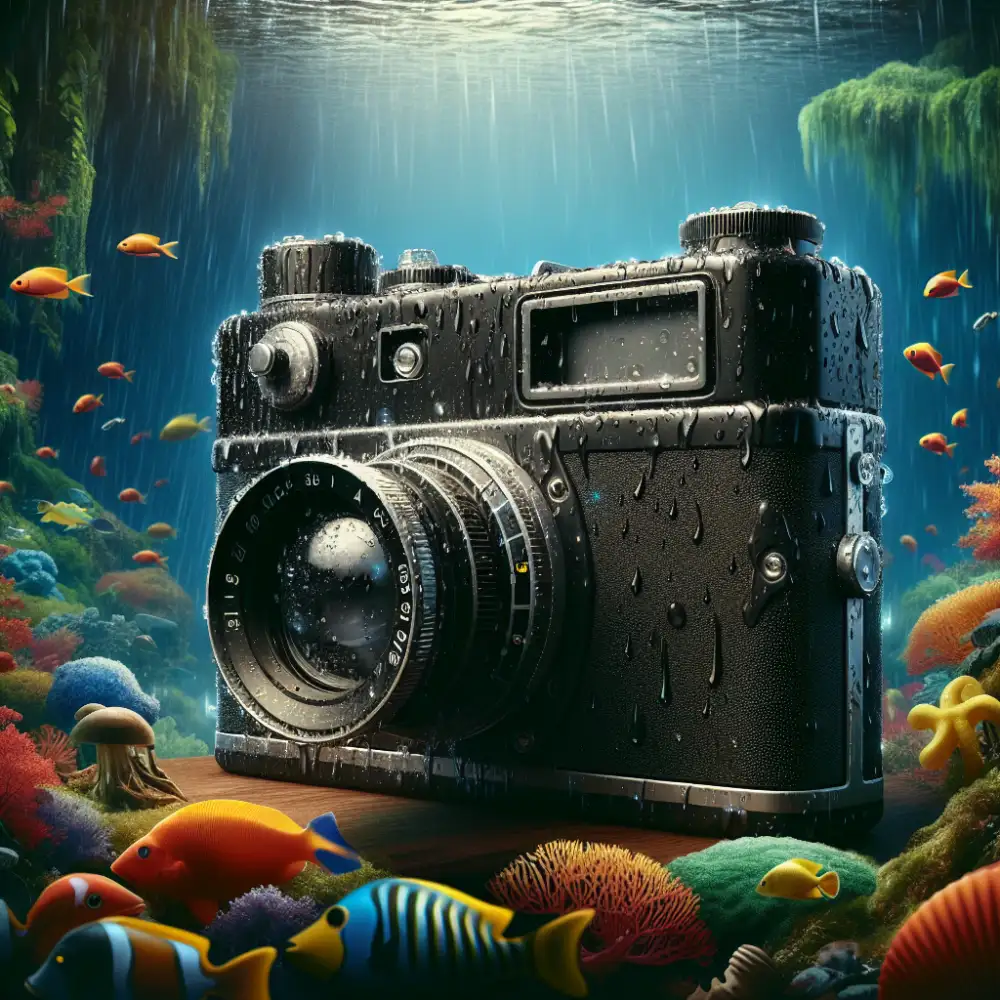
Don't forget about the lens! Use a lens cloth or tissue specifically designed for camera lenses to wipe away any water spots or smudges. Avoid using harsh chemicals or abrasive materials, as these can scratch the lens. After cleaning, store your camera in a cool, dry place. Avoid leaving it in direct sunlight or extreme temperatures, as this can damage the seals and internal components. With a little TLC, your waterproof film camera will be your trusty companion for capturing memories in any environment.
Published: 27. 06. 2024
Category: Food



